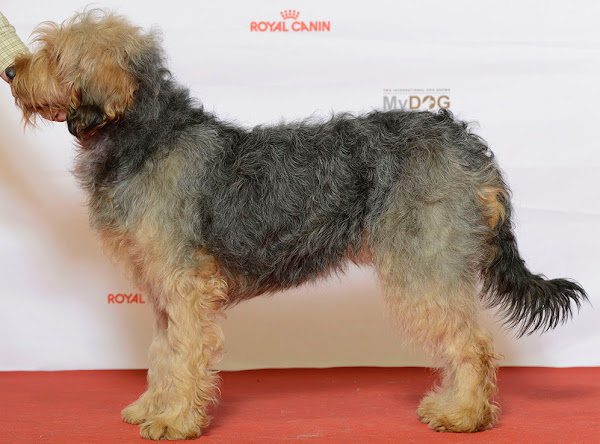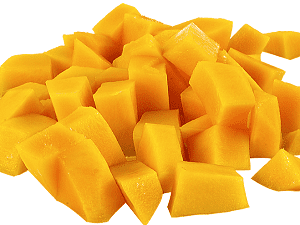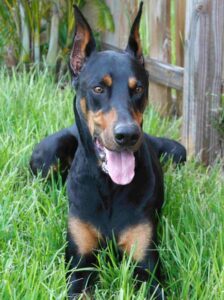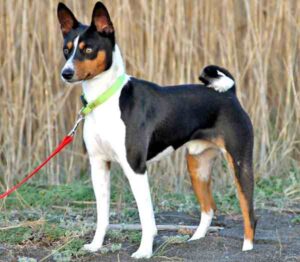The Barak hound dog is a medium-sized breed of hunting dog. It is actually a scenthound and originally were used for hunting large game. It is also known by some other names such as Bosnian Broken-haired Hound, Bosnian Rough-haired Hound, Bosnian Rough-coated Hound, Bosnian Coarse-haired Hound, Illyrian Hound, Bosnian: Bosanski oštrodlaki gonic and simply as Bosnian Hound. These names of the breed refer to the texture of the shaggy coat, usually called broken-haired or hard in English dog fancier jargon.
The Barak hound dog breed was developed in Bosnia. Former name of the breed was Illyrian Hound, referring to a pre-Slavic people of the area.
Today’s Barak hound breed is descended from indigenous dog types, crossed with an Italian gun dog in the 1890s. Local hunters wanting to produce an efficient scent hound, developed this breed in the 19th Century, using the available stock of dogs.
The early type of today’s smaller Istrian Shorthaired Hound may also have contributed to the Barak hound dog.
The Barak hound breed was first recognized by the Fédération Cynologique Internationale in 1965 under the name of “Illyrian Hound”. The name was changed to more accurately describe it’s area of origin in Bosnia.
The breed is in Group 6, Scenthounds, Section 1.1 Large-sized Hounds, and is breed number 155. It is also recognised by the United Kennel Club (US) as the “Barak”, in the Scenthound Group.
The Barak hound breed is not recognized by any other major kennel clubs in the English speaking world, although many minor kennel clubs, internet dog registry businesses, and rare breed registries promote and register it as a unique pet.[1]
Barak Hound Dog Characteristics
The Barak hound dogs are medium in size with very beautiful appearance. The most striking feature of this dog is it’s shaggy, hard coat of yellowish or greyish colors, often with a white blaze on it’s head along with other white marks.
They have longer legs than most of the scenthound out there which makes it a distinct dog. Their chest is deep and the legs are relatively thicker. The tail is thick and slightly curved and held upright. And the face has a bushy mustache and beard.
The Barak hound dogs are medium in size. Average body height of the mature dog is between 17 and 22 inches at the withers. And average live body weight of the mature dog is between 16 and 27 kg.

Temperament
The Barak hound dog is generally a friendly and good-natured breed that may get along with children and can sometimes be raised with smaller pets like cats.
The breed is highly dedicated to it’s job and to it’s owner. So, they require a lot of training and socialization to get along with strangers and sometimes with other dogs.
The Barak hound dogs tend to be louder and more vocal than other dog breeds. While these behaviors can be reduced through training, but they probably won’t be eliminated entirely.
Lifespan
Average lifespan of the Barak hound dog breed is between 12 and 15 years.
Feeding
How much a mature dog eats depends on it’s size, age, build, metabolism and activity level. Dogs are individuals, just like people, and they don’t all need the same amount of food.
The Barak hound dogs are medium in size and very active. So, their diet should be formulated for a medium-sized breed with high exercise needs. You can also consult with a vet in your area for better recommendations.
Caring
Taking good care of the animals is very important for raising Barak hound dogs. As a hunting breed, they have high exercise requirements. A single walk daily won’t be enough for them.
They have strong work ethic and excellent stamina. At a minimum, they need 45 minutes of vigorous activity each day, and they will appreciate having a fenced yard in which to run.
The Barak hound dog is an intelligent breed, so it is relatively easy to train them. They are very eager to please their master, so train them from an early age and always use the positive method of training.
Health
The Barak hound dogs are generally healthy. But like all other dog breeds, they are also prone to certain health conditions.
Their common health problems include hip or elbow dysplasia, cataracts, progressive retinal atrophy, patellar luxation and entropion. Always keep good contact with a vet in your area.
| Breed Name | Barak Hound |
| Other Names | Also known by some other names such as Bosnian Broken-haired Hound, Bosnian Rough-haired Hound, Bosnian Rough-coated Hound, Bosnian Coarse-haired Hound, Illyrian Hound, Bosnian: Bosanski oštrodlaki gonic and simply as Bosnian Hound |
| Breed Size | Medium |
| Height | Between 17 and 22 inches at the withers |
| Weight | Between 16 and 27 kg |
| Good as pets | Yes |
| Climate Tolerance | All climates |
| Color | Wheaten yellow, reddish yellow, earthy grey, blackish |
| Lifespan | Between 12 and 15 years |
| Good for children | Yes |
| Rarity | Common |
| Country of Origin | Bosnia and Herzegovina |






